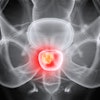
NEW YORK (Reuters Health), Jul 17 - The closer a person lives to heavy traffic, the more likely he or she is to have atherosclerosis, also referred to as "hardening of the arteries," a chief risk factor for heart disease and stroke, German researchers report.
The atherosclerosis risk associated with living near a busy street is probably somewhat greater than the risk associated with secondhand smoke exposure, Dr. Barbara Hoffmann of University Hospital Essen, the study's lead author, told Reuters Health.
However, people who are worried about heart disease would be better off attending to well-established risk factors, such as high blood pressure, diabetes and sedentary lifestyle, rather than trying to move further away from busy streets, Hoffmann added. "Nevertheless, city planners should be aware of this association and should plan accordingly when the construction of new buildings and roads is being discussed," she said in an interview.
While several studies have linked air pollution with particulate matter to a greater risk of heart attack, there is little evidence on whether this is due to short- or long-term exposure, Hoffman and her team note in the medical journal, Circulation.
To better understand the relationship, the researchers looked at coronary artery calcification (CAC), defined as the amount of calcium that has collected in the blood vessel walls. CAC, which accurately diagnoses atherosclerosis and can predict heart attack and other events, can be measured with a special type of CT scan.
Hoffmann and her colleagues evaluated 4,494 people living in three large cities in Germany's industrial Ruhr region. The investigators calculated study participants' exposure to particulate matter based on their address, and also measured the distance in meters of their home to the closest major road. They defined high CAC as calcification above the 75th percentile based on a person's age and gender.
The risk of high CAC climbed steadily as the distance between a person's home and a major road shrank, the researchers found. Compared with people residing at least 200 meters from a busy road, those living between 101 and 200 meters had an 8% risk of high CAC, while risk for people living 51 to 100 meters from a major road was 34% greater. Among those who lived within 50 meters of heavy traffic, the risk of high CAC was increased by 63%.
Hoffmann and her colleagues are now looking at follow-up data from study participants five years on to determine whether living close to a busy road accelerates the development of CAC. "That will be a very strong finding ... if we can show that, but we don't know yet," she said.
By Anne Harding
Last Updated: 2007-07-16 16:43:21 -0400 (Reuters Health)
SOURCE: Circulation, July 31, 2007.
Related Reading
Beta-blocker use may slow coronary disease progression, July 3, 2007
Copyright © 2007 Reuters Limited. All rights reserved. Republication or redistribution of Reuters content, including by framing or similar means, is expressly prohibited without the prior written consent of Reuters. Reuters shall not be liable for any errors or delays in the content, or for any actions taken in reliance thereon. Reuters and the Reuters sphere logo are registered trademarks and trademarks of the Reuters group of companies around the world.
















